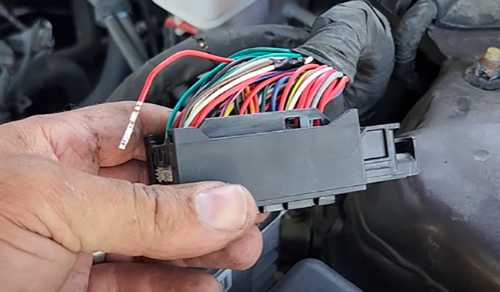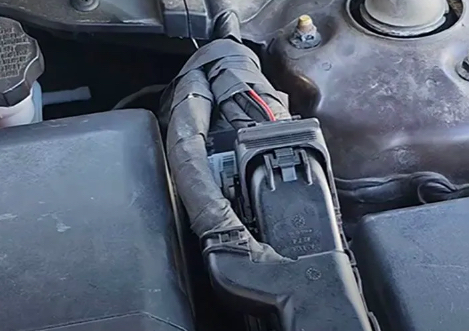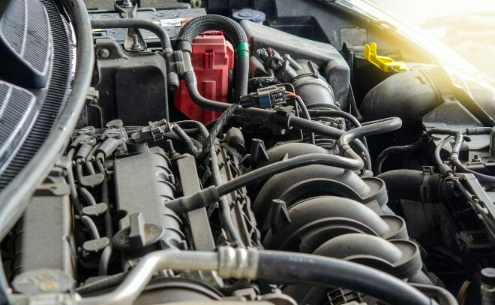P1326 Hyundai Sonata arises from vibrations indicating excessive wear in the connecting rod bearings. Detecting these vibrations becomes straightforward by utilizing the Knock Sensor Detection System (KSDS). When this wear progresses to a critical point, it may lead to severe engine damage and potential failure. Thus, the device conscientiously alerts the driver to the initial stages of bearing wear.
Should the wear persist, continuous vibrations will prompt the Malfunction Indicator Lamp (MIL) to flash continuously, promptly notifying the driver of the issue. Additionally, a Diagnostic Trouble Code (DTC) is established to identify the root cause of the problem precisely.
Causes of P1326 Hyundai Sonata

The issue within the knock sensor detection system may stem from various factors, including:
- Breakage of the cables or connectors associated with the detonation sensor.
- A malfunctioning sensor.
- A poorly functioning motor.
- Occasional reprogramming of the Engine Control Module (ECM).
- The P1326 OBD-II Engine Trouble Code can also be attributed to a Fuel Rail Pressure Sensor Circuit malfunction.
Significance of the P1326 Hyundai Sonata with Electronically-Controlled Automatic Transmissions:
The P1326 Hyundai Sonata code signifies a concern with the 3-4 shift solenoid in vehicles equipped with electronically-controlled automatic transmissions. This solenoid is responsible for initiating hydraulic circuits that engage clutches or bands, facilitating gear changes within the automatic transmission.
Understanding P1326 Hyundai Sonata

An inspection is necessary to ascertain the presence of signal interference in the wiring. If such interference is detected, the recommended action involves replacing the Sub Engine Assembly (long block) when engine replacement becomes imperative.
Exploring Limp Mode in Hyundai Engines:
The safeguard mechanism known as “limp mode” or “limp home mode” becomes operational when the engine or gearbox control unit identifies a fault. Activation of limp mode results in speed limitation and the deactivation of non-essential components, such as air conditioning, in response to detected defects.
Decoding a Blinking Check Engine Light in a Hyundai Sonata:
When the check engine light on a Hyundai begins to blink, immediate attention is warranted, as it signifies a critical issue that necessitates swift resolution. Typically, this blinking light indicates a substantial engine misfire that allows unburned fuel to escape into the exhaust system.
Primary Symptoms of Sensor Circuit Malfunction
A P1326 error code may manifest in various ways, including:
- Persistent illumination of the check engine light.
- Reduced engine power.
- Unstable or uneven idling.
- Continual activation of the malfunction indicator lamp (MIL).
- Challenges in starting the vehicle.
- Difficulties during engine startup.
- Experiencing both rough idling and stalling.
- Additional driving-related issues.
Efficient Diagnosis of a Sensor Circuit Malfunction
Diagnosing a sensor circuit malfunction necessitates the expertise of a skilled technician, as only individuals with experience can accurately recognize its symptoms. The process involves specific steps:
- Confirm that the issue pertains to error code P1326.
- Begin by resetting the Engine Control Module.
- Ensure that no other Diagnostic Trouble Codes (DTCs) remain active.
- Inspect the knock sensor, wire harness, and ECM for loose connections.
- Turn the ignition key to the ON position without starting the engine, and verify its proper rotation. Then, could you return it to the OFF position?
- If an open or short circuit is detected during this test, proceed to replace the knock sensor. If the PCM reports error code P1326, scrutinize each plug wire and coil pack for spark. Additionally, assess fuel pressure and injector pulse waveform while cranking the engine.
Cost of Diagnosing a Sensor Circuit Malfunction
The expense of repairing a P1326 Hyundai Sonata can vary, ranging from $225 to $1500 or potentially higher. The total cost depends on the specific parts requiring replacement, as well as the labor involved. This code is generally manufacturer-specific, which may limit the availability of alternative replacement components for certain vehicles experiencing similar symptoms. The final cost is contingent upon the quantity and type of parts requiring replacement and the duration of the diagnostic and repair process.
For reference, replacement knock sensors are available within the price range of $100 to $300, depending on the source. Installation of a new knock sensor may incur costs ranging from $45 to $200, influenced by geographical location and service provider.
Effortless Resolution of Error Code P1326
Proficiently addressing a sensor circuit malfunction is a task that an experienced technician can swiftly accomplish. Several straightforward techniques are employed to rectify the issue:
- Consult Technical Service Bulletins (TSBs) for guidance.
- Employ an automotive scanner to identify any additional Diagnostic Trouble Codes (DTCs) related to error code P1326, ensuring alignment with the scanner’s findings.
- Conduct a comprehensive examination of the wires and connectors connected to the Detonation Sensor to identify and address common issues. If necessary, undertake repairs or replacements.
- Utilize the required instruments to measure Knock Sensor voltages, ensuring the absence of open circuits or grounding. Adjustments should be made if any irregularities are detected.
- Assess the condition of the detonation sensor by the manufacturer’s recommendations, replacing it if found to be defective.
- Re-evaluate Knock Sensor voltages using the appropriate instruments, verifying the absence of open or short circuits. Corrective measures should be taken upon confirmation of any anomalies.
- Inspect the engine for mechanical problems, addressing all stored codes, especially those associated with error code P1326.
- Avoid common diagnostic errors, including concluding based solely on data from various trouble codes, assuming absolute accuracy of scanning methods, incorrectly attributing the source of symptoms, and neglecting to check for other DTCs before diagnosing error code P1326.
Additionally, replacing components that have deteriorated due to wear and contamination is essential, and adhering to recommended repair procedures utilizing approved fluids, cleaners, and lubricants when dealing with automotive components.

